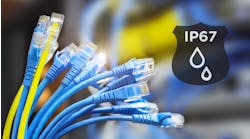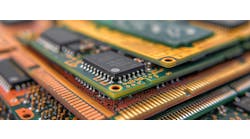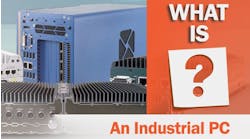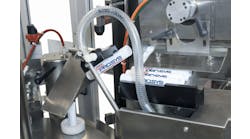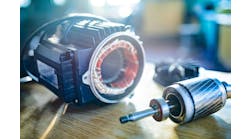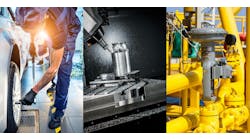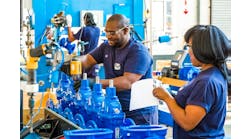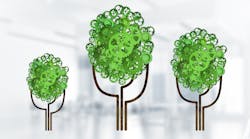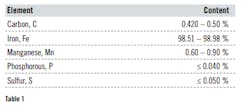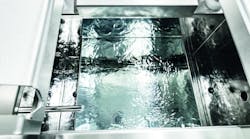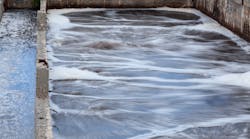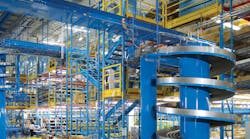Latest from Learning Center
Top Manufacturing Stories of 2024
Best Manufacturing Guides of 2024
What Is an Industrial PC?

Do You Know Motors?
The concept of clean living has been around for a long time, but it wasn’t until recently that it became the movement that it is today. Where once you needed to travel out to the countryside to find a local farm stand that sold farm-fresh produce, today we have complete marketplaces that sell only certified-organic produce.
Many consumer products are quick to tout that they are free from this additive or free from that ingredient. These consumer-first initiatives, in response to the desire to not pollute our bodies or our environment, have extended into the industrial world as well.
It was 1948 when the United States federal government passed the Federal Water Pollution Control Act. Before this point, there were no laws that prohibited the use of our rivers and oceans as repositories for industrial waste. The Act was rewritten in 1972 and granted the newly created Environment Protection Agency (EPA) broad authority to protect all surface waterways including wetlands, rivers, streams, lakes, and the oceans.
In 1963, the United States federal government passed the first Clean Air Act. Its initial purpose was to research methods for monitoring and controlling air pollution. However, it was quickly realized that the booming automobile population was a major source of toxins polluting the air.
To address these emissions, the government passed the Motor Vehicle Air Pollution Control Act in 1965. In 1970, additional legislation was passed which mandated limits be placed on industrial sources of air pollution as well.
In 1974, the United States federal government passed the Safe Drinking Water Act. This legislation mandates that all public drinking water systems are free from microorganisms, disinfectants & their byproducts, certain organic & inorganic chemicals, and radioactive particulates.
In 1990, legislation was passed that further improved both the air and the water by addressing the issues of acid rain, ozone depletion, and toxic air pollution.
Although these legislative actions helped to improve the air and water quality, none of them address the end-of-life disposal of products and their possible leaching of toxic chemicals into the environment.
The idea of toxic chemicals leaching into the ground and eventually finding their way into our waterways and food sources led the European Union (EU) to develop Directive 2002/95/EC, commonly known as the Restriction of Hazardous Substances (RoHS).
This directive was enacted in 2002 and compliance was mandatory on July 1, 2006.
The directive placed strict limits on the use of lead (Pb), mercury (Hg), cadmium (Cd), hexavalent chromium (CrVI), polybrominated biphenyls (PBB), and polybrominated diphenyl ethers (PBDE) in electronics and electrical products. It also applied some restrictions to the coatings and plating of components in these devices.
Since the introduction of the initial directive, the EU has upgraded the restrictions two times.
The first upgrade Directive 2011/65/ EU, also known as RoHS2, added the requirement that all products bearing the CE designation mark also be RoHS compliant.
The most recent upgrade is EU Directive 2015/863, which is also known as RoHS3. This directive expands the list of restricted substances to ten from the original six.
Here is the full list and the maximum allowable concentrations:
- Cadmium (0.01%)
- Lead (0.1%)
- Mercury (0.1%)
- Hexavalent chromium (0.1%)
- Polybrominated biphenyls (PBB) (0.1%)
- Polybrominated diphenyl ethers (PBDE) (0.1%)
- Bis(2-ethylhexyl) phthalate (DEHP) (0.1%)
- Butyl benzyl phthalate (BBP) (0.1%)
- Dibutyl phthalate (DBP) (0.1%)
- Diisobutyl phthalate (DIBP) (0.1%)
In addition to the RoHS regulations, there is another regulation that exists for chemical usage within the EU. This regulation is the Registration, Evaluation, Authorization, Restriction of Chemicals (REACH).
This regulation is administered by the European Chemicals Agency (ECHA). The ECHA currently identifies 197 substances made from 71 base chemicals which it has identified as hazardous to humans and the environment.
Specifically, these substances have been found to be carcinogenic, mutagenic, reprotoxic, bio-accumulative, and toxic, or endocrine disruptors. The most current list of restricted chemicals can be viewed here.
Unique to REACH is that it applies to all applications of restricted chemical substances. It's not restricted to electronic or electrical products in the way RoHS is; nor is it restricted to the industrial use of these chemicals.
REACH regulations apply to the paint you use on your home, it applies to the solvents that you use to remove tar from your carpet, and it even applies to the stain release treatment applied to your favorite sofa.
All of the above regulations restricting the inclusion of these hazardous substances and hazardous chemicals in our products and processes are an excellent way to help prevent the leaching of toxic substances into our environment.
However, none of these substances or chemicals are commonly found in gearing and the RoHS3 directive applies only to electronics and electrical systems. The most common gearing material is carbon steel. The make-up of AISI 1045 steel is outlined in Table 1.
As such, the request to certify that a carbon steel gear is RoHS3 compliant is an example of bureaucratic hubris. In addition to being free of the REACH and RoHS substances, all steel gears are also soy-free, gluten-free, non-GMO, BPA-free, sugar-free, salt-free, caffeine-free, phthalate-free, paraben-free, and are not manufactured on shared equipment with peanuts, tree nuts, wheat, soy, milk, eggs or shellfish.
Clean air and clean water are excellent ideas, and everyone should do their part. We should all recycle our plastics, paper, glass, and metal. We should properly dispose of refuse and no trash should ever be discarded as litter.
We can all contribute to keeping the environment clean. Let’s start by eliminating all of the hubris.
